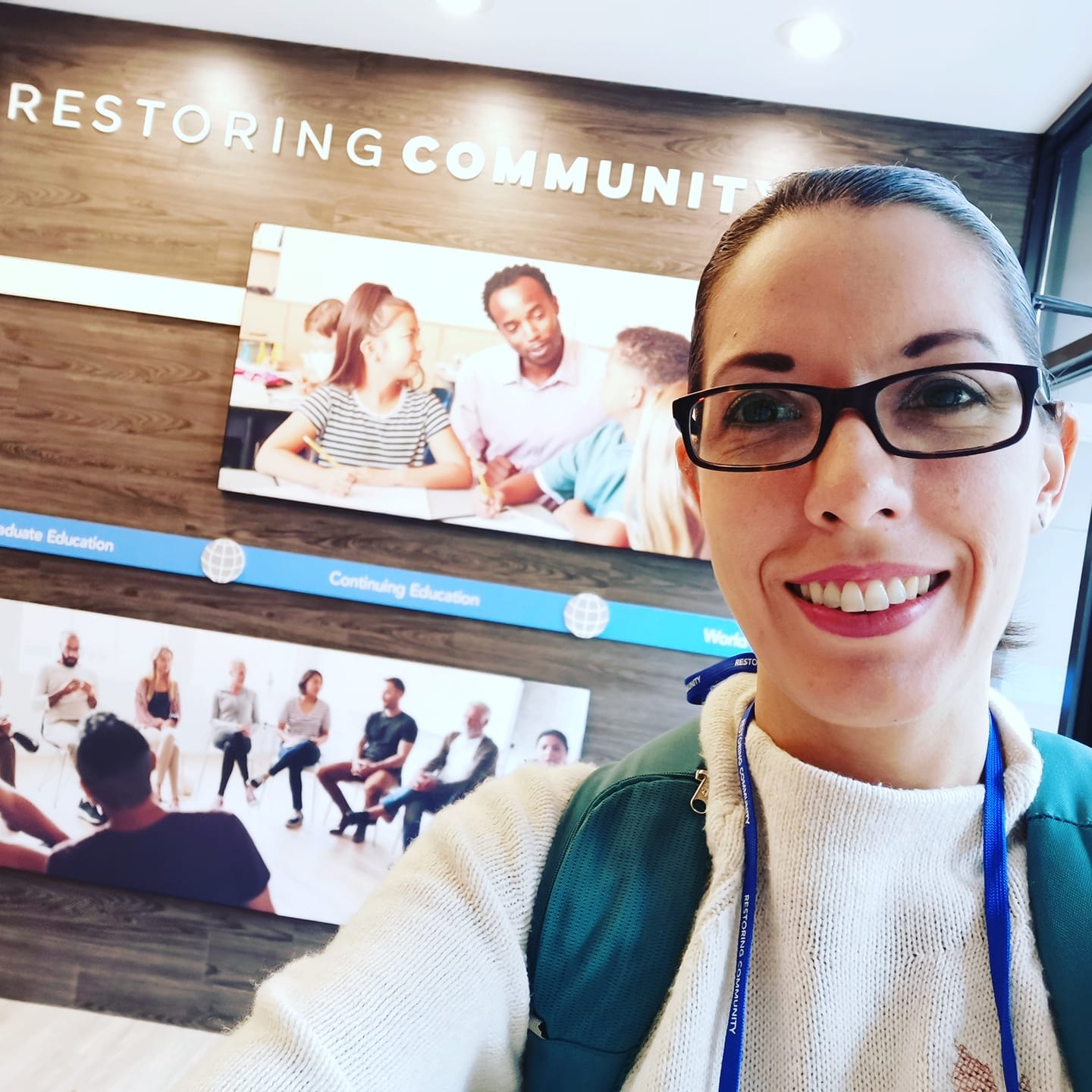by Claire de Mézerville-López M.Ed M.S.
Community Engagement Specialist, IIRP
Resilience is a concept that emerged in the psychological field in the 1990’s, referring to an individual’s ability to recover from adversity. Coming to an understanding of resilience has engendered controversy: what does it take for an individual to have the golden substance of resiliency? Is it natured or nurtured? It may sound similar to talking about alchemy. I must clarify right now that my focus here is not about the individual’s capacity for resiliency. I want to talk about the community’s capacity for resiliency and how this resiliency can become strengthened through youth’s peer mentoring in school communities.
Defining Resilience & Peer Mentoring in Community
The American Psychological Association (2025) defines resilience as “the process and outcome of successfully adapting to difficult or challenging life experiences, especially through mental, emotional, and behavioral flexibility and adjustment to external and internal demands” (APA, 2025). I will address how this applies to communities in the following section.
As for peer mentoring, I will understand it as the support and advice someone receives from somebody that has experienced similar issues (The Advocacy Project, 2025). Finally, I will define community here as:
“any group sharing something in common — place (such as a city, neighborhood, or school district), experience (such as shared experience of racism), or interest (e.g., a community’s concern about poverty or violence prevention)” (University of Kansas, 2025).
So, how do we understand community resilience, specifically if we are referring to school communities, and how can peer mentoring help?
Creating Resilient Communities
Ellis and Dietz (2017) define resilient communities as those that have the following conditions:
1. The community is able to sustain economic development
2. Residents possess social capital to some degree
3. Effective bidirectional transfer of information and communication between residents and the social services agencies that serve them
4. The community is competent to support civic engagement, self-management of their health and social needs, and collective empowerment for community advocacy and engagement
These are basic conditions for communities to face and endure adversity. Considering these elements, Ellis et al. (2022) have found that policies and practices that shape the structural conditions of any community, are significant in the promotion or suppression of their ability to face adversity. Let me recap: (1) economic development, (2) social capital, (3) education and health services that work WITH the community (instead of FOR them), and (4) advocacy through civic engagement, should be a priority in any initiative towards strengthening community. It is important to consider, however, that working on these large and complex structural issues may lead adults to act without consulting or engaging youth and students.
The importance of empowering youth
Krauskopf (2014) warns against the risks of adult-centered settings and how they undermine possibilities for positive youth development. Adult-centered organizing treats children and adolescents as passive recipients of services. This means missing the opportunities that youth may have for developing skills, enhancing self-confidence, creating a sense of belonging and committing generously to giving back to their surrounding community. Engaging youth is not limited to consulting with them: it means creating an active listening space for adults to understand them and allow them to actively participate.
Peer mentoring can take different forms in that process; it may mean supporting youth to organize in small peer groups, led by some of them, and present their proposals and agendas. It may include identifying youth leaders to support kids that are falling behind academically or socially. It may also mean identifying potential leaders and allowing current leaders to foster a mentoring relationship with them so that they can become fully engaged with these initiatives. It could also mean to create talking circles to ask the youth: what kind of mentoring would you need to participate actively in the issues that we are facing right now? These types of conversations are supported by the work done by Community Matters to train youth leaders and school staff in Restorative Practices and in bystander education through the Safe School Ambassadors® program.
To some, this may seem like an unnecessary task for school communities: there’s so much work to do already! Yet, fostering student leadership will definitely create a stronger sense of collective self-efficacy in our oh-so-complex twenty-first century. There are no recipes or clear cut solutions. For communities to prepare and become ever more resilient, there’s significant work to be continued, through organizing, engaging, and advocating. Actively including youth is healthy, and doing so through horizontal exchanges that foster growth, such as receiving mentoring support from a peer, will offer a profound sense of human connection, positive opportunities for youth development and an overall strengthening of educational collectives that need to be ready to face a volatile and fast-changing world.
References
American Psychological Association (2025). Resilience. https://www.apa.org/topics/resilience
Ellis, W. & Dietz, W. (2017). A New Framework for Addressing Adverse Childhood and Community Experiences: The Building Community Resilience (BCR) Model. Academic Pediatrics, 586-593. https://www.doi.org/10.1016/j.acap.2016.12.011
Ellis, W.; Dietz, W.H., & Chen, K.D. (2022). Community Resilience: A Dynamic Model for Public Health 3.0. J Public Health Manag Pract, 28(1): S18-S26. https://www.doi.org/10.1097/PHH.0000000000001413
Krauskopf, D. (2014). Adolescencia y Educación. EUNED.
The Advocacy Project (2018). Mental Health and Peer Mentoring – Sharing Hope. https://www.advocacyproject.org.uk/news/mental-health-peer-mentoring-sharing-hope/
University of Kansas (2025). Community Toolbox. Section 2. Understanding and Describing the Community. https://ctb.ku.edu/en/table-of-contents/assessment/assessing-community-needs-and-resources/describe-the-community/main
 Claire de Mézerville López is a licensed psychologist from UCR (Universidad de Costa Rica). She holds a Master in Education with an emphasis on cognitive development from ITESM (Instituto Tecnológico de Estudios Superiores de Monterrey, México), and a Master of Science in Restorative Practices from the IIRP Graduate School, and is a Ph.D. ABD (all but dissertation) candidate at the Community Engagement Program at PointPark University. She is also an associate professor at Universidad de Costa Rica, and has experience as a therapist, researcher, and consultant. Claire has published papers on adolescence, restorative practices, resilience and educational psychology. Claire has worked with the IIRP since 2011, where she currently serves as a liaison to Spanish-speaking communities and organizations in Latin America and elsewhere.
Claire de Mézerville López is a licensed psychologist from UCR (Universidad de Costa Rica). She holds a Master in Education with an emphasis on cognitive development from ITESM (Instituto Tecnológico de Estudios Superiores de Monterrey, México), and a Master of Science in Restorative Practices from the IIRP Graduate School, and is a Ph.D. ABD (all but dissertation) candidate at the Community Engagement Program at PointPark University. She is also an associate professor at Universidad de Costa Rica, and has experience as a therapist, researcher, and consultant. Claire has published papers on adolescence, restorative practices, resilience and educational psychology. Claire has worked with the IIRP since 2011, where she currently serves as a liaison to Spanish-speaking communities and organizations in Latin America and elsewhere.
